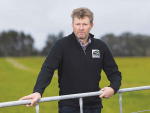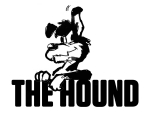Federated Farmers is welcoming Beef+Lamb NZ's Economic Service confirming declines in the national sheep flock and beef herd may now be at an end. It also confirms the North Island has become the dominant island for both sheep and beef.
"It shows what a couple of good back to back seasons can do for stock numbers and morale," says Jeanette Maxwell, Federated Farmers Meat & Fibre chairperson.
"While lambing numbers are looking good for sheep and calving prospects good for beef, we are of course in a global economic vice as key export markets struggle.
"Every stock unit will be needed to bridge an income gap due to falling prices, best illustrated by lamb. Last season, we were tracking towards T150 with a season average of $115 per lamb but this season, lamb prices are predicted to go backwards by 17%, to $95.00.
"If we get the projected increase in the lamb crop, it could help offset reduced farm incomes.
"What is not looking flash is a tanking wool market. Fibre farmers look at falling wool returns from such a 'green fibre' and are rightly cynical about upbeat claims surrounding the so-called green economy.
"Federated Farmers is committed to working positively to turn this around because wool is the 'undiscovered country' of New Zealand's primary industries.
"Then, of course, there is the weather. While spring looks reasonably benign NIWA is predicting an El Niño pattern could develop in the tropical Pacific. This is something all farmers need to keep an eye on and underscores why water storage is needed.
"At a headline level, the national sheep flock is up 2.6% to 31.94 million animals. The good news with hoggets being up 7.1%, to 10.26 million animals, is that they are potential indicators of future capital stock intentions.
"What I think we are also seeing is a return of sheep and beef to traditional areas. Much of the land convertible to dairy seems to have passed from our industry into dairy or dairy support. In the South Island especially, beef farmers seemed to have swapped their bulls for cows.
"Beef in the South Island is down 5.6% to just over 1 million animals, whereas in the North Island, numbers there are up 3.6% to 2.84 million animals. When it comes to sheep, the only region to record a slight fall was Marlborough-Canterbury.
"North Island farmers will be cock-a-hoop because sheep numbers there went up 4% to 16.08 million animals. That contrasts with a modest 1.2% increase in the South Island returning 15.86 million animals.
"It means the sheep industry crown has gone north to join the one they already hold for beef," Maxwell says.



















